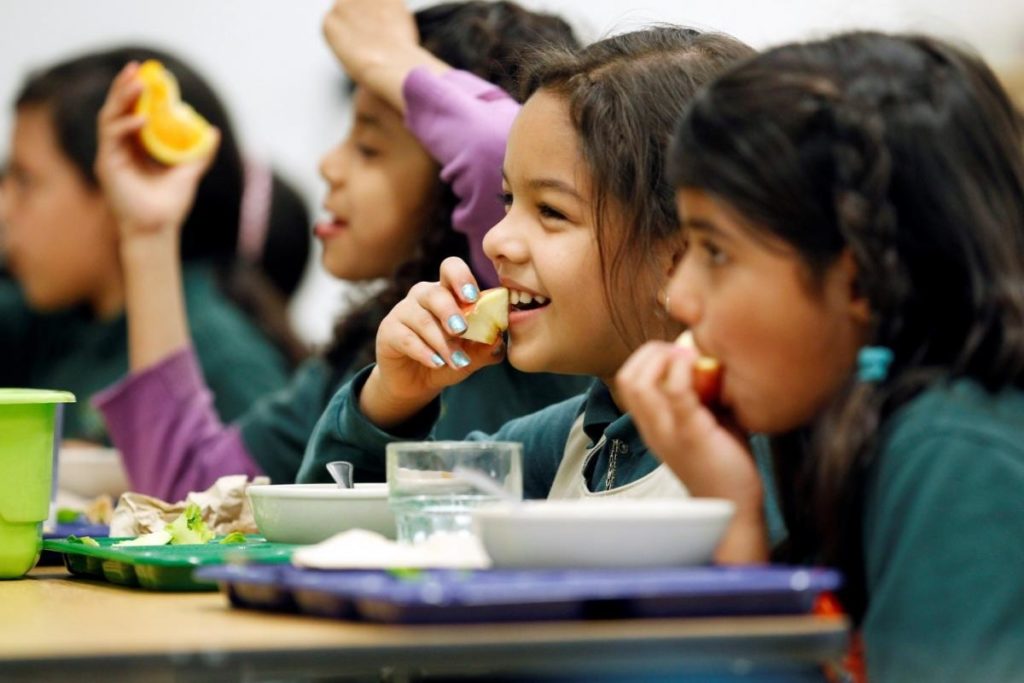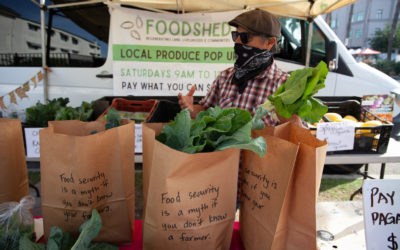Becoming a subscriber to Foodshed’s Fresh 5 program—a weekly distribution of fresh, seasonal produce, grown by the small farmers who make up the Foodshed cooperative—means you’re in for two surprises with every delivery. One is the produce itself: an ever-changing...

Good Food Purchasing Program at Escondido Union School District
Public institutions spend billions of dollars on food purchases each year, which presents an incredible opportunity to transform the food system. The Good Food Purchasing Program was designed to redirect purchasing dollars to small and mid-sized local food producers who employ sustainable production systems, offer safe working conditions and fair pay to workers, and provide healthy and humane care for farm animals. On the consumer side, the program aims to improve equity, affordability, accessibility to vegetables, fruit, whole grains and minimally processed foods in order to promote health and well-being. The nationally recognized framework is built around five interrelated values—local economies, environmental sustainability, valued workforce, animal welfare, and nutrition—and is widely considered one of the most comprehensive food procurement policies in the country. Within less than five years, GFPP has influenced nearly a billion dollars in annual food purchases across the nation.
In June 2020, the Escondido Union School District became the first institution in San Diego County to adopt the Good Food Purchasing Program framework. “We are part of the solution,” said Gail Gousha, EUSD Nutrition Services Director. “The COVID environment, although very difficult, has created an environment where hard decisions and solutions to real world problems have to be found. Keeping a strong focus on our community partnerships, environment and conservation should never wane and we remain committed to value-based procurement.”
As the first institution in San Diego County to adopt the GFPP framework, Escondido Union School District reaffirmed its leadership role as a school food innovator, leveraging the power of a $5.6 million annual procurement budget to support the improved health and well-being of students and promote greater equity throughout the food system. “Escondido Union School District is a leader for Farm-to-School in San Diego County,” said Dane Petersen, Program Coordinator, Community Health Improvement Partners. “Each year, the district’s Child Nutrition Services team has demonstrated their dedication to sourcing local ingredients and offering a variety of meatless options to improve the health of their students. By adopting the Good Food Purchasing Program framework, EUSD will continue to advance healthy food access within their cafeterias, as well as in the community of Escondido.”
With more than three-million meals served annually, EUSD is poised to have a significant impact on students, food vendors, and growers across the region. This move will improve the nutrition and quality of meals for more than 18,000 low income students and offer greater access to healthy food for the entire school community. “The Good Food Purchasing Program is a valuable step towards providing students with the food they need to be healthy and successful learners,” said Chelsea Walczak Vircks, the Senior Director of Community Impact for the American Heart Association, San Diego Division.
Gail Gousha and the EUSD Nutrition Services team’s holistic approach to student health reaches beyond the cafeteria with educational resources and events for families and staff. This includes being an active partner in community street fairs, food distribution, and the Food 4 Kids Backpack Program, all of which reinforces the district’s larger vision for a more just, healthy, and sustainable food system.





